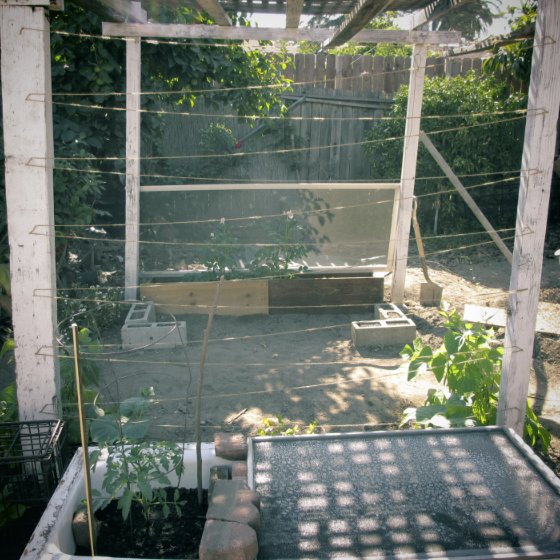BEFORE
Almost a month ago I was concerned about my baby blueberry bush which was, I noticed< turning red in color. After much research I found out that the red leaves were not normal for Summer although common for blueberry plants during Winter. On a very helpful blueberry site, Backyard Berry Plants, the question was posed:
Q: Why are my blueberries leaves turning red?
A: They do this for different reasons. They turn red in the fall of course (and orange/yellow), and that is expected. It if is spring or summer and this is happening, your pH could be too high and /or they are not getting enough nitrogen. I usually put a couple full shovels of peat moss around each plant in the spring, along with its annual spring fertilizer treatment, and I have never had this problem in my production bushes. I am more likely to see it in potted nursery plants, as pH and nitrogen can rapidly change given increased watering (leaching nitrogen and raising pH) and temperatures (increased plant growth with not enough nitrogen).
After reading this interesting information and realizing this might very well be the case for me (I was watering my blueberry bush every other day if not everyday) I decided to water my blueberry plant less.... way less, let's say roughly twice a week.
Now, over three weeks later my blueberry plant is looking more green and less red!
AFTER
Read the previous post, Backyard Berry Plants, Specializing in Organically grown blueberry, blackberry, and red raspberry plants























































